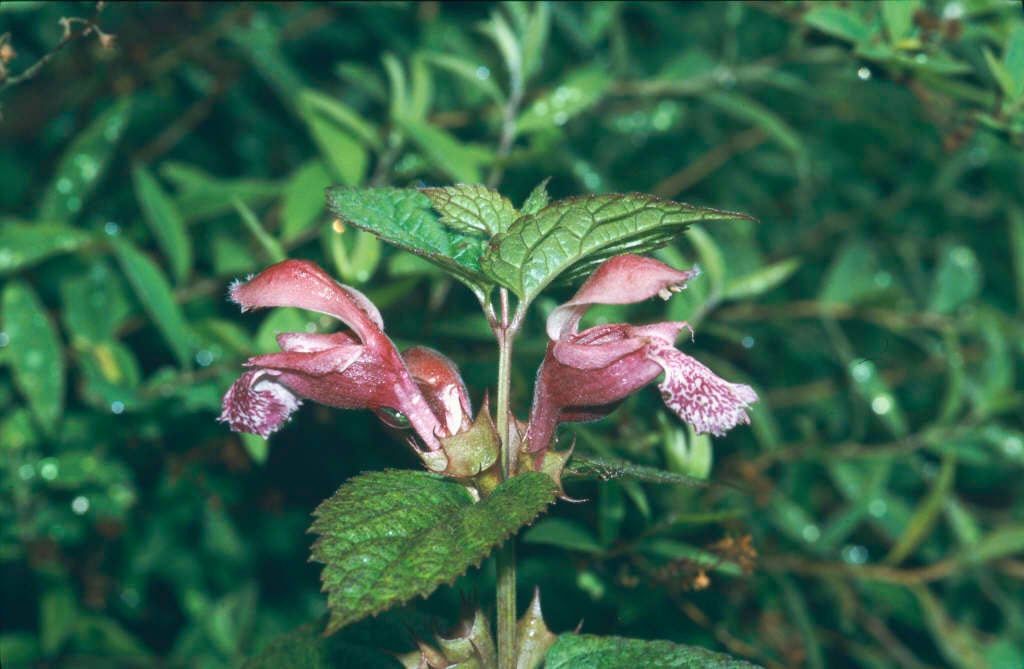Lamium orvala
balm-leaved red deadnettle
An herbaceous perennial forming a clump of attractive, ovate leaves, with spikes of whorled pinkish-purple flowers 4cm in length in late spring and summer
Other common names
balm-leaved archangelbalm-leaved deadnettle
see moredragon flower
Hungary deadnettle

Buy this plant
Size
Ultimate height
0.1–0.5 metresTime to ultimate height
2–5 yearsUltimate spread
0.1–0.5 metresGrowing conditions
Moisture
Moist but well–drained, Well–drainedpH
Acid, Alkaline, NeutralColour & scent
| Stem | Flower | Foliage | Fruit | |
| Spring | Pink | Green | ||
|---|---|---|---|---|
| Summer | Pink | Green | ||
| Autumn | Green | |||
| Winter |
Position
- Full shade
- Partial shade
Aspect
West–facing or East–facing or North–facing
Exposure
Sheltered Hardiness
H7Botanical details
- Family
- Lamiaceae
- Native to GB / Ireland
- No
- Foliage
- Deciduous
- Habit
- Matforming
- Genus
Lamium can be annuals or, more usually, perennials, with coarsely toothed ovate leaves and 2-lipped, tubular flowers borne in whorls forming a short spike
- Name status
Correct
- Plant range
- C & S Europe
How to grow
Cultivation
Best grown in moist but well-drained soil in a sheltered position in deep or partial shade
Propagation
Propagate by division in autumn or early spring
Suggested planting locations and garden types
- Flower borders and beds
- Ground cover
- Underplanting of roses and shrubs
Pruning
After flowering, plants can be cut back to encourage fresh foliage cover
Pests
Generally pest-free
Diseases
Generally disease-free
Love gardening
Sign up to receive regular gardening tips, inspiration, offers and more
View our Privacy Policy
Get involved
The Royal Horticultural Society is the UK’s leading gardening charity. We aim to enrich everyone’s life through plants, and make the UK a greener and more beautiful place.